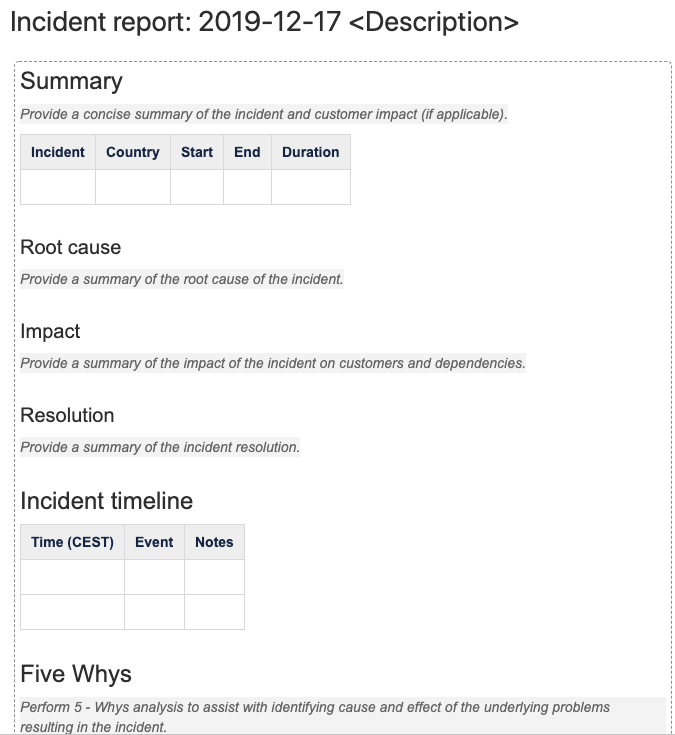The Power of the Narrative
One thing I learned to do before giving a talk is to practice it beforehand. I figured this out in high school after blacking out fairly consistently during presentations in front of the class. A harsh start to my career as a speaker.
To avoid this from happening again, I would practice presentations before, by presenting them to with the wall as my audience. It was shocking how often slides with their nice pictures, and occasional bullet point, seemed perfectly logical and sensible while editing them in Powerpoint, until I started to narrate them, and they made no sense at all.
Quality goes even more up when actually writing the narrative down. For instance, the quality of content of my talk version of the 100x engineer improved a lot after forcing myself to write it down. While I would never present by reading text word-by-word, the act of writing it down helps and improves quality and validating the logical connections between the parts.
As with many things in life, Jeff Bezos already figured all this out 15 years ago. In 2004 he banned power point decks from Amazon, and forced everybody to write 6 page narrative memos instead. Meetings at Amazon start with ~15 minutes of all participants reading, and only then discussing the matter and making a decision.
Bezos' rationale:

Though Bezos admits that silently reading memos together is the “weirdest meeting culture,” he has to carve out the time because his execs are busy.
“If we don’t, the executives, like high school kids, will try to bluff their way through a meeting,” says the CEO at a recent Forum on Leadership. ”[The memo is] supposed to create the context for what will then be a good discussion.”
(Source: CNBC)
The 6 page memos described are structured like a dissertation defense:
- The context or question
- Approaches to answer the question — by whom, by which method, and their conclusions
- How is your attempt at answering the question different or the same from previous approaches
- Now what? That is: what’s in it for the customer, the company, and how does the answer to the question enable innovation on behalf of the customer?
While we do not ban power points in OLX (yet), today, we do have two types of meetings in place where a written narrative is expected:
- Our RFC-based architecture review process
- Incident reports
Initially, both meetings started out without high expectations on written documentation. The idea was to basically sketch out planned services (in case of the architecture RFCs) on a whiteboard, or talk though the incident and do 5 why's analysis. However, quite quickly we realized our meetings would be much more effective if we'd all get a narrative document beforehand laying out all the facts and plans. In addition, adding a predefined structure to those documents would guide the author on what to talk and think about, before bringing it to the group.
Eventually this evolved into (in our case) Confluence templates for both these types of documents. Here's the one for our incident reports:

Our architecture RFC template is more elaborate, but guides the author through explaining the goals and non-goals, business context, proposed design and technology stack, timeline for implementation, dependencies, alternative designs considered, operational aspects of the change, security/privacy concerns, and risks. After submitting the document, anybody can comment, challenge and ask questions. Quite often the outcome is that no meeting is required at all. And who doesn't love no meeting?
One of our product managers used to work for Amazon and also runs his monthly stakeholder update meetings by running through a pre-shared narrative document. These are very effective meetings.
Our experience confirms that there's a lot of value in getting people to write down their plans in plain English, as a narrative. It is a good exercise for the team, making sure they consider all aspect of their solution (or incident), and it creates space for others to understand what work is planned, to challenge it, to point out obvious gaps or propose alternatives. It is also a good way to separate the well-considered decisions from the more ad-hoc YOLO moves.
In general, writing is a valuable skill to possess, yet not everybody has the talent for it. Jeff Bezos on the topic:
Surely to write a world class memo, you have to be an extremely skilled writer? Is it another required element? In my view, not so much, at least not for the individual in the context of teams. The football coach doesn’t need to be able to throw, and a film director doesn’t need to be able to act. But they both do need to recognize high standards for those things and teach realistic expectations on scope. Even in the example of writing a six-page memo, that’s teamwork. Someone on the team needs to have the skill, but it doesn’t have to be you. (As a side note, by tradition at Amazon, authors’ names never appear on the memos – the memo is from the whole team.)
As the end of the year is approaching, in my group we are considering if we want to expand the role of the written narratives beyond where we use it today. Requiring written narratives for big architectural changes and incidents has had a positive impact on the quality of the decisions we make, especially in the area of software architecture. Setting quarterly goals as OKRs would be an obvious next candidate for this. Today's results and plans for the next quarter are still presented on elaborate slide decks, and sometimes the connection between the two is not obvious. Perhaps that's something to tackle next...
If you'd like to learn more about Amazon's culture of narrative writing, give these articles a read. They are listed, for your pleasure, as bullet points:
